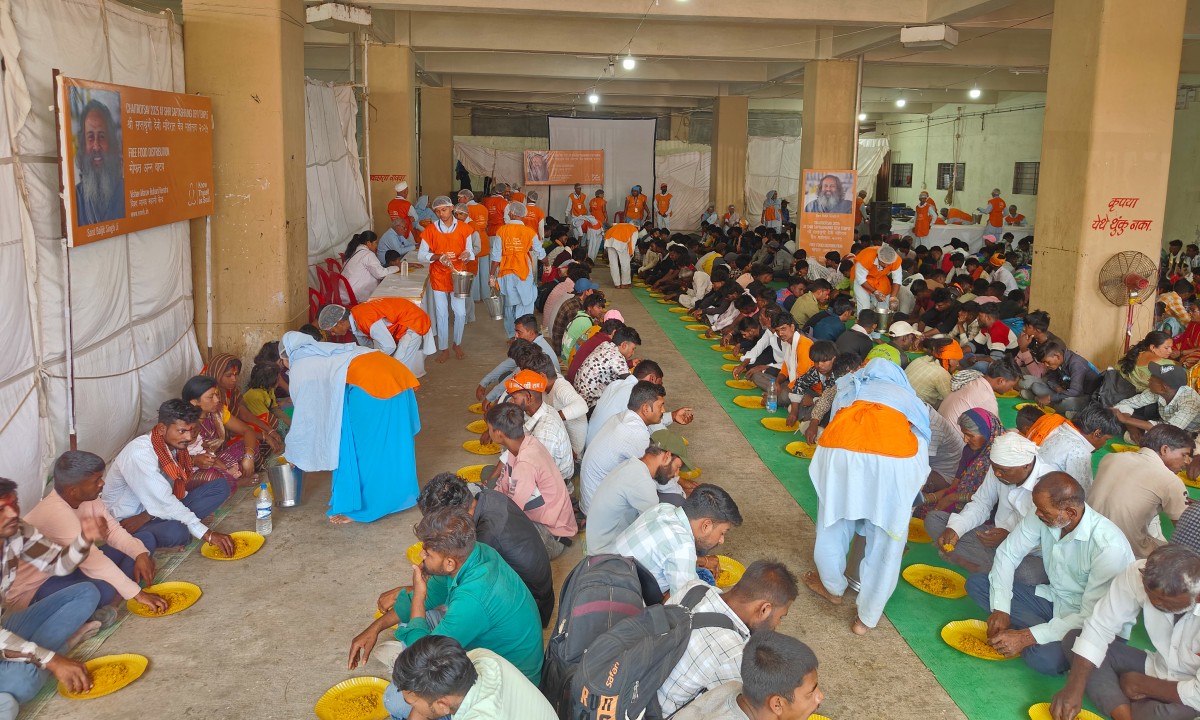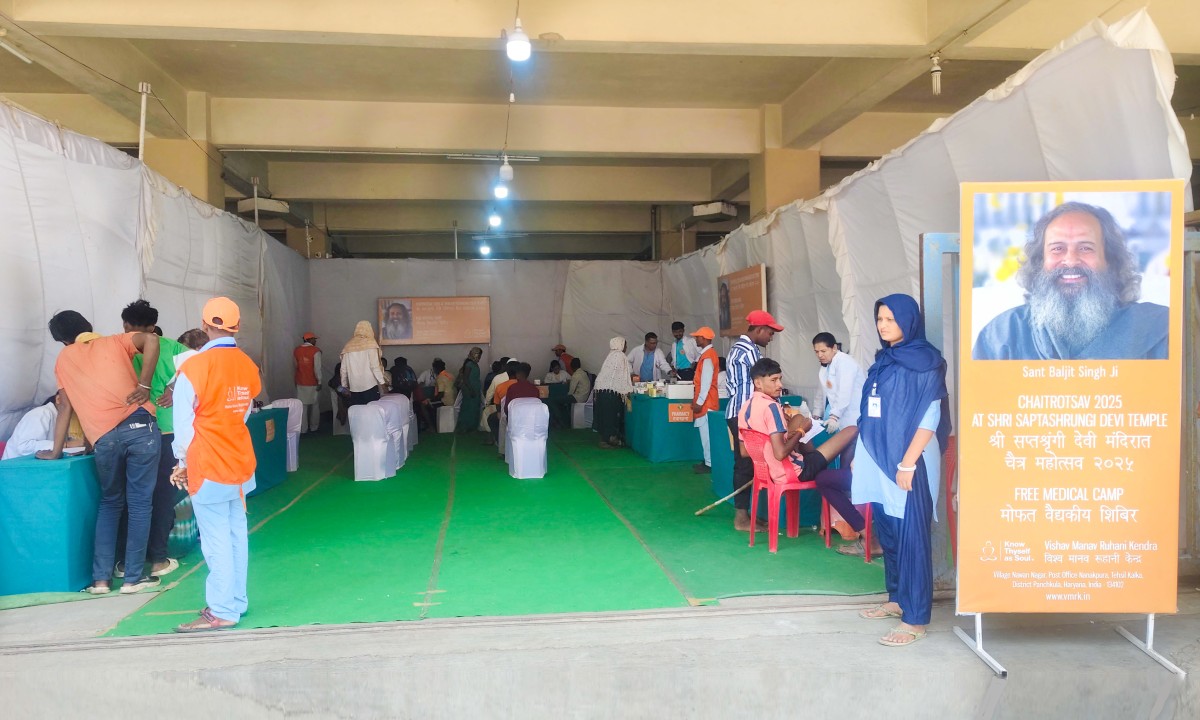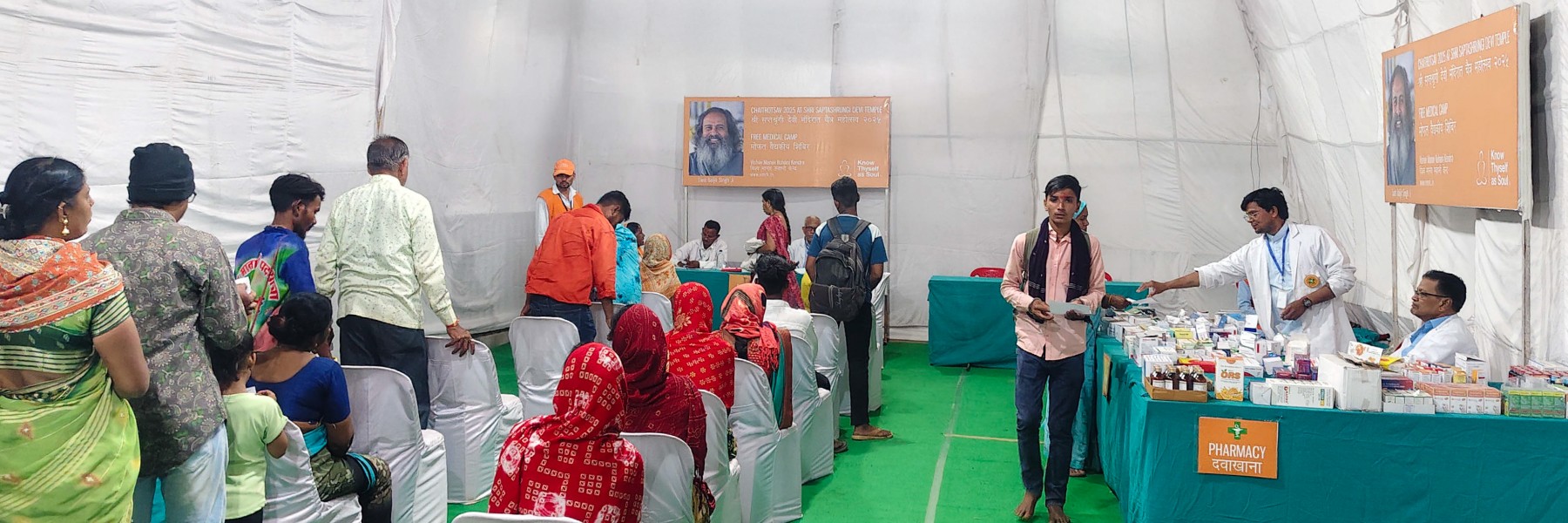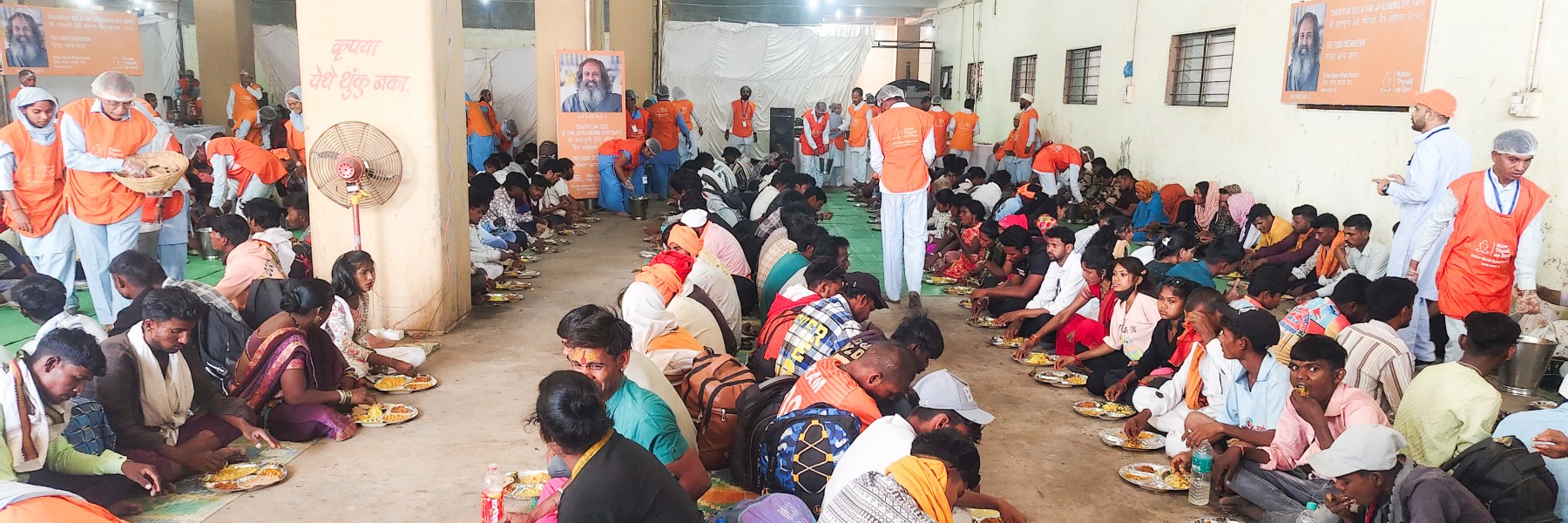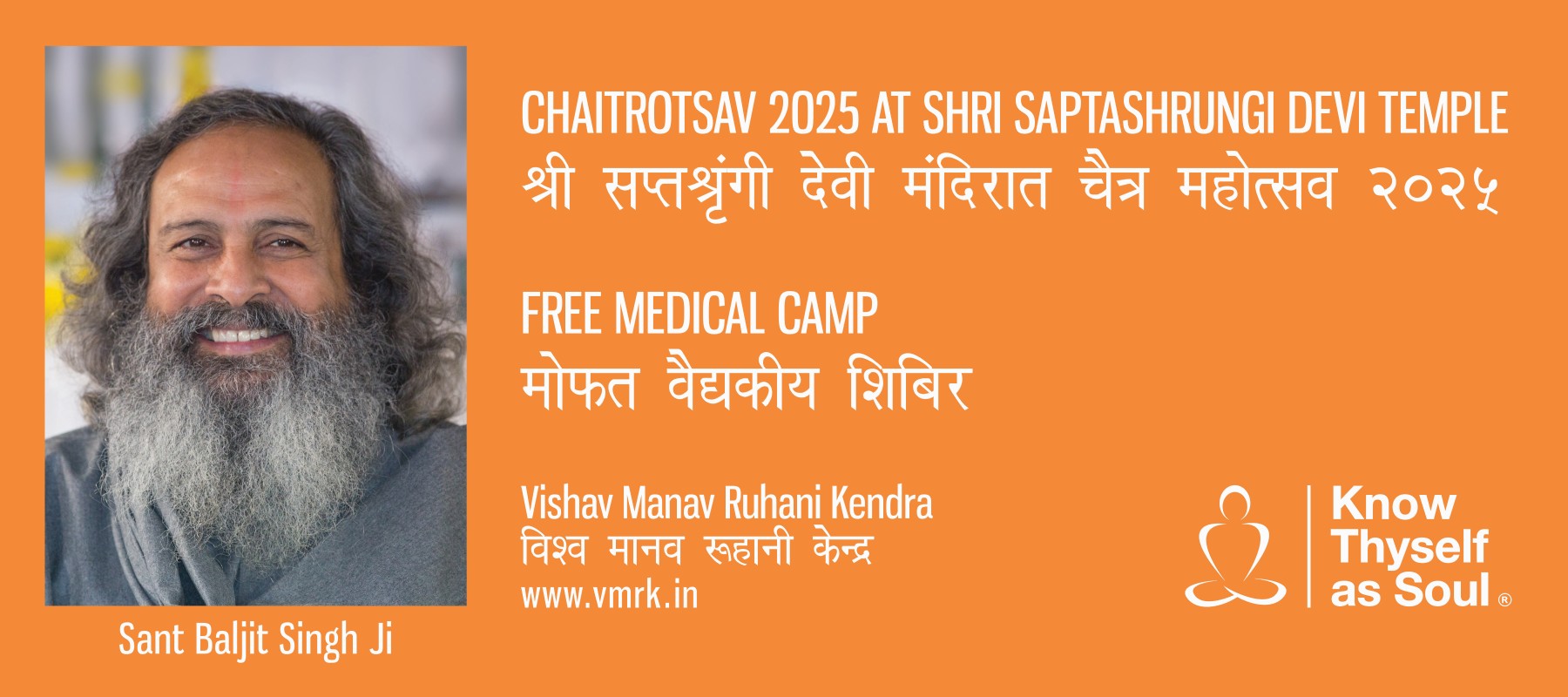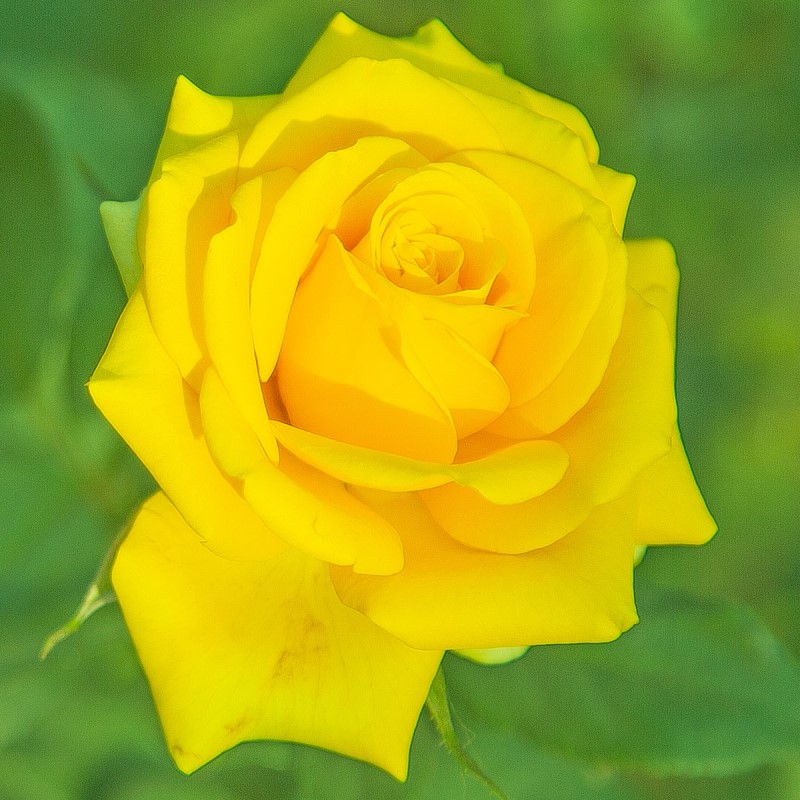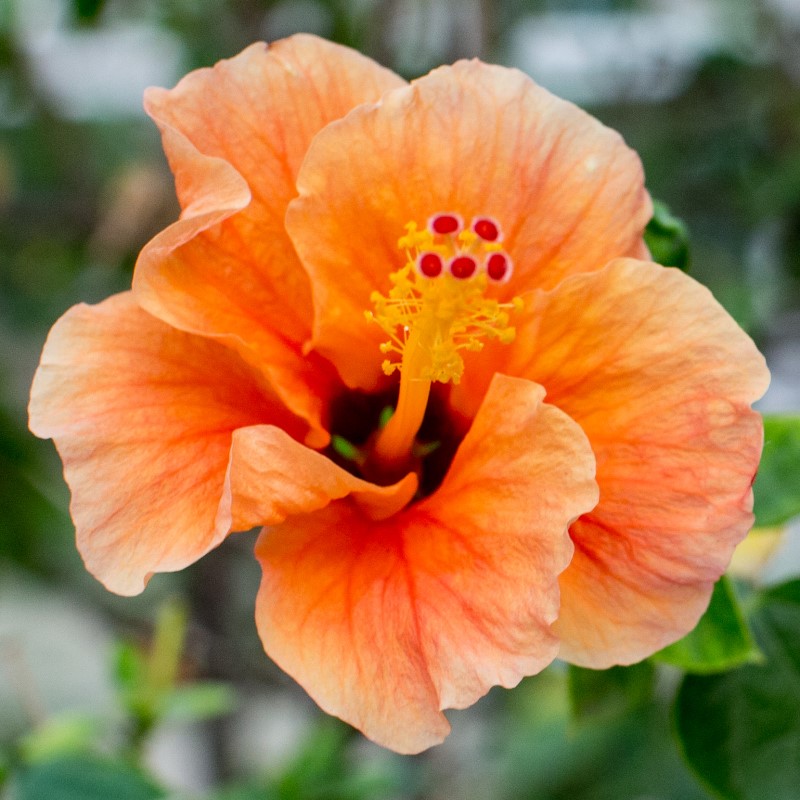2025 Chaitra Navratri Utsav at Shree Saptashrungi Nivasini Devi Temple
Every year, the Chaitra Navratri Utsav is celebrated with great devotion and festivity at the Shree Saptashrungi Nivasini Devi Temple, located on the hillside. The festival commences with Ram Navami, i.e., the ninth lunar day in the Hindu month of Chaitra (March-April of the Gregorian Calendar) and concludes on Chaitra Purnima (the full moon in the month of Chaitra).
Traditionally, on this occasion, a large group of devotees walk on foot from Khandesh, a region in Maharashtra considered to be the maternal home of Shree Saptashrungi Nivasini Devi. The devotees cover more than 250 kilometers to reach the temple, carrying with them a ten-foot-high flag. This flag is then ceremoniously hoisted atop the temple hill at midnight, just as the day of Chaitra Purnima begins. In celebration of this occasion, devotees from other regions also arrived to have darshan of the goddess and the flag. Many of them also undertake the yatra (pilgrimage) on foot from their residence. The devotees begin arriving a few days prior, and the influx increases each day until it peaks on the night of the full moon on Chaitra Purnima.
In 2024, Vishav Manav Ruhani Kendra (VMRK) provided food, medical, and ambulance services to devotees during the Chaitra Navratri Utsav at Shree Saptashrungi Nivasini Devi Temple. Satisfied with the services provided, the local administration approached VMRK again to continue these services in 2025. This year, Chaitra Purnima was observed on April 12, 2025, and VMRK offered services from April 8 to 12, 2025.
Site visit and preparations
The local administration provided VMRK with a roofed hall measuring 75 feet by 100 feet, situated approximately 1 kilometer from the temple. A team of VMRK volunteers conducted an initial site visit to gather insights and meticulously plan for this charitable activity. They first surveyed the entire allocated area to determine how best to arrange the setup. This assessment was then used to estimate the number of devotees that could be accommodated per sitting, as well as the total number that could be served throughout the day. This also helped to estimate the number of volunteers required to serve the devotees. In addition, the team noted the available power supply and the lighting needs to ensure the area would be well-lit.
Armed with the observations from the site visit, VMRK then began preparations at the Pimpalner center. VMRK purchased ingredients to serve 8,000 meals each day. These ingredients, along with other materials including utensils, tables, and chairs, were loaded on two trucks. VMRK volunteers also thoroughly cleaned the ambulance for emergency medical services. Inside the ambulance, ten boxes of medicines were loaded for use at the medical camp. Two trucks and the ambulance, accompanied by a team of 25 volunteers, reached the assigned location early in the morning on April 7. Other volunteers traveled directly to the location from their homes.
To serve the devotees efficiently, the volunteers were divided into five teams. There was a food preparation team, a food distribution team, and a medical team. Additionally, a reception team was formed to assist devotees with information about VMRK and its various charitable initiatives. Lastly, the security team was formed to manage and guide the large crowd of devotees.
Getting ready to serve
VMRK divided the assigned location into four sub-areas: medical camp, reception area, food distribution area, and food preparation area. At the medical camp, tables were set up for patient registration, blood pressure checkups, first aid, patient consultations, and dispensing medicines.
In the food distribution area, mats were arranged in rows so that devotees could sit comfortably while eating their meals. For senior citizens and individuals with special needs, tables and chairs were arranged within this area to allow them to dine with ease. Both at the food distribution and the reception area, LED screens were set up. These screens displayed VMRK’s charitable initiatives and highlights from past devotional events organized by VMRK. Throughout the assigned location, CCTV cameras and five fire extinguishers were installed to enhance safety and security.
VMRK commenced medical and food services from the morning of April 8.
24-hour medical services
VMRK’s medical camp was staffed by a team of 5 doctors, 3 pharmacists, 2 nurses, a paramedical staff, and 17 volunteers. During the event, devotees continuously arrive throughout the day and night, therefore, the team worked in shifts to provide 24-hour service.
A significant number of devotees completed their entire journey on foot, with some even walking barefoot. As a result, many devotees came to the medical camp seeking medical care due to the physical exertion from walking long distances. Maharashtra’s scorching April heat also made the journey very challenging for devotees. Many experienced symptoms such as fever, dehydration, dizziness, body pain, swollen feet, foot blisters, and injuries. The medical team carefully attended to them, providing free consultations, medicines, and first aid. These patients were given rehydrating drinks or prescribed medicines for their medical conditions. To help relieve their tired and aching feet, a foot massage service was also offered, along with pain relievers.
An ambulance was stationed next to this camp to transport patients with severe health conditions to the nearest hospital for further diagnosis and treatment.
5 doctors, 3 pharmacists, 2 nurses, 1 paramedical staff, and 17 volunteers worked in shifts TO PROVIDE MEDICAL SERVICE 24 HOURS DAILY
PILGRIMS RECEIVED MEDICAL CARE FOR DEYHDRATION, WOUNDED FEET, AND OTHER MEDICAL CONDITIONS
Round-the-clock food services
When VMRK initiated its food service, it quickly gained widespread appreciation from devotees both for the hygiene and the taste of the meals. Every day, a team of over 280 volunteers worked to serve three hot meals around the clock to the devotees. The meal comprised chapati, seasonal vegetables, rice, and pulses.
Inside the food distribution area, volunteers greeted devotees with folded hands and the chant of “Jai Mata Di” (which means “Praise to the Mother Goddess”). The devotees were then guided to the seating area. VMRK volunteers were on hand, constantly moving through the seating areas to serve them food. To ensure hygiene, these volunteers wore disposable food service hairnets and gloves. Additionally, care was taken to maintain the cleanliness of the food distribution area. As soon as a row of devotees finished their meals and exited the area, our volunteers promptly cleaned that section before allowing other devotees to take their seats.
In the afternoon of April 12, in coordination with the local administration, VMRK concluded its services. Over the five days of service, VMRK served more than 36,320 meals to devotees and provided free medical care to over 5,240 individuals.
The Temple Trust of Shree Saptashrungi Nivasini Devi Temple extended appreciation for the round-the-clock services provided by VMRK. They regularly visited the food distribution area and even had meals there. They also expressed appreciation for how the volunteers smoothly managed the large crowd of devotees.
More than 280 VMRK volunteers worked in shifts to prepare and serve breakfast, lunch, and dinner EVERY DAY
VEGETARIAN MEALS WERE SERVED AROUND THE CLOCK TO DEVOTEES
Visitor feedback
Many people commented in the visitor book at the site, some are listed below:

